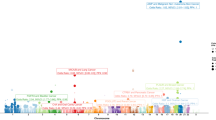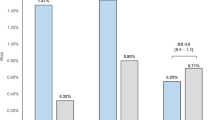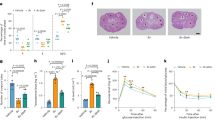Abstract
There is increasing evidence that essential fatty acids (EFA) may have a role to play in the aetiology of some types of cancer although their precise mode of action is unknown. Differences in the metabolism of EFA between patients with benign or malignant prostatic disease may help to elucidate their role in the latter. We have, therefore, measured the concentration of the essential fatty acids, and their metabolites, in the phospholipid fractions of both plasma and tissue, in patients with either benign or malignant prostatic disease. Comparison of the median concentration of fatty acids in each group (n = 10) revealed significant differences between them. The phospholipid component of total lipid was greater in malignant (P less than 0.04, unpaired t-test) than in benign tissue. The concentrations of linoleic acid (LA) and di-homo gamma linolenic acid (DGLA) in plasma and tissue were not different between the two groups of patients, but a significant reduction in arachidonic acid (ARA) (P less than 0.002, Mann-Whitney U-test) and docosapentaenoic acid (DPA) (P = 0.009) concentrations was observed in malignant tissue as compared to benign. Patients with malignant prostatic disease also had a significantly higher concentration of oleic acid in phospholipids from both plasma and prostatic tissue. The stearic to oleic acid ratio was similar in plasma but was significantly reduced in malignant tissue (P = 0.006). We suggest that the decreased arachidonic acid concentration in malignant tissue may be due to its increased metabolism, via the lipoxygenase and cyclooxygenase pathways to produce higher concentrations of eicosanoids, rather than an impairment in desaturase activity in situ.
This is a preview of subscription content, access via your institution
Access options
Subscribe to this journal
Receive 24 print issues and online access
$259.00 per year
only $10.79 per issue
Buy this article
- Purchase on Springer Link
- Instant access to full article PDF
Prices may be subject to local taxes which are calculated during checkout
Similar content being viewed by others
Author information
Authors and Affiliations
Rights and permissions
About this article
Cite this article
Chaudry, A., McClinton, S., Moffat, L. et al. Essential fatty acid distribution in the plasma and tissue phospholipids of patients with benign and malignant prostatic disease. Br J Cancer 64, 1157–1160 (1991). https://doi.org/10.1038/bjc.1991.481
Issue Date:
DOI: https://doi.org/10.1038/bjc.1991.481



